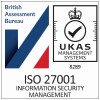Technology alone can never create powerful user experiences. Rather, it creates the potential for such experiences to be realised.
Companies truly committed to understanding the wants and needs of their customers are those who pay super-close attention to these needs as they change (often rapidly!) then iterate the UX fast and efficiently using the right tech solutions.
360Globalnet’s technology – based on the speed and low cost that comes with no-code configuration and automation - was designed to provide these tools. We allow insurers, reinsurers and all those in their vertical supply chains to unlock efficiency and customer satisfaction simultaneously. Let’s take a closer look at how...
-
ITERATION IS THE KEY: A single largest cause of online customer dissatisfaction in online insurance - and in fact all transactional or evidence gathering journeys - is confusion. The choice architecture that underpins a customer journey may have been white boarded to within an inch of its life but it is often impossible for those embedded deeply in internal processes to understand how a customer who hasn’t used an online journey before will interpret what they see. All it takes is poor wording, navigation or signalling to create a muddle in a valuable customer's mind that can drive them to the phone (and so unnecessary cost). No-code configuration allows teams to iterate and refine journeys every few days if they wish without racking up IT and development cost. It means that continual test/refine/retest loops can run fast and cheaply, each time increasing user satisfaction while driving operational efficiency.
-
AVOIDING THE EXCLUDED MIDDLE: Imagine an online motor claim form where the customer is presented with two options neither of which fits their perception of the situation. Say: "Can you drive your car to a garage?" Or "Is your car immobile?" A customer whose car is drivable but who is worried that it is not in a fit state to drive is stuck. All the ‘middle descriptions’ that fit their perception of their situation are omitted. Again, this impasse causes people to exit an online journey and reach for the phone. This type of poor UX is easily remedied by giving customers more branches on the decision tree to guide them to the answer that feels just right to them. In the world of wine, experts worked out long ago that simple iterative questions - "Red, White or Rosé?", "More raspberry or blackcurrant?" "More coffee or leather?" - allow people move step-by-step to much more complex descriptions of their experience. No-code configuration allows business practitioners to build out information gathering that is complex overall but simple at each step – primarily because the cost and speed of change is negligible.
-
THE NEED TO SAY MORE: Many online experiences – especially in claims - leave customers worried to hit submit because they feel denied of the chance to explain important details that are particular to their case. Companies trying to simplify information gathering may shortcut data entry options and so miss vital pieces of the jigsaw. We know for sure that every insurance claimant feels that their situation is unique. It usually isn't but to keep people off the phone and within a hyper-efficient channel, user experience has to address this worry. Free text fields are shunned because they imply human workload to process. But by adding in unstructured data analysis, such as 360Retrieve, free text can become easy to manage and incredibly valuable, allowing customers to explain the fine detail which is then automatically examined to look for key triggers that can indicate danger signs, particularly in motor and medical claims. Cases that hit the right triggers are then placed for triage by human handlers who can add value where it's most needed.
-
THE CHANCE TO REVIEW - When explaining and recalling events, people need a chance to review and amend what they've entered. In insurance, a well-structured online journey can include nudges to make fraudsters to withdraw spurious claims before submitting them. For the genuine customer, it’s often in the review that forgotten information is recalled. If their only option is then a browser back button plus the dreaded 'You are about to resubmit a form' warning, many will - again - resort to phoning. Good journeys don't tie the customer or claimant down, they allow them to reconsider, amend, review and re-amend until they are happy. With good 'chunking' of the information provided customers can easily navigate what they have already entered. The many areas of the Gov.uk website have made a virtue of this UX benefit. In insurance, it can be the difference between straight through processing and a frustrated customer who abandons and calls.
The issue with traditional ‘spec and develop’ systems is that there is a huge price (literally) in getting the UX wrong. A journey is only perfect if what’s presented coincides exactly with a customer's world view.
At 360Globalnet, our goal is to give you the right tools to create the best UX and so the best journey for both parties, company and customer. We do this with ultra-configurable journeys that don't require IT or developers to build or amend them. Anyone has been to Legoland knows that incredible complexity can emerge from simple-interconnectivity. That's our aim with technology - to allow you to create the journeys that your customers, your CEO, CFO, COO and Compliance all need to deliver competitive advantage.
If you'd like to find out more, get in touch today. We'd be delighted to show you the power of no-code technology in claims mangement.
Other links you may find interesting:
'Your customers increasing demand a tree-mendous service but often encounter dead wood'
How 360Globalnet uses no-code tech to remove five things CEOs hate
